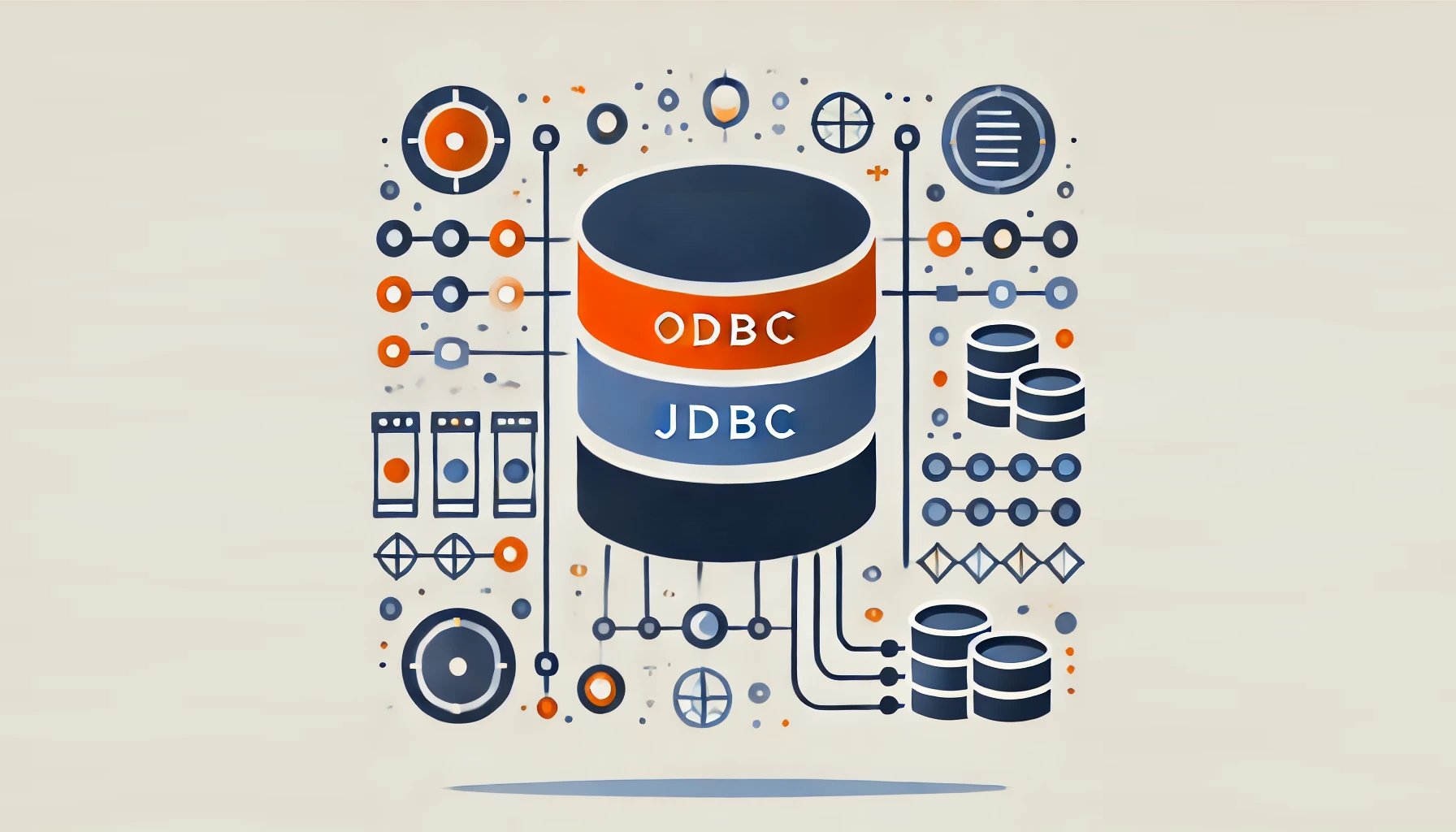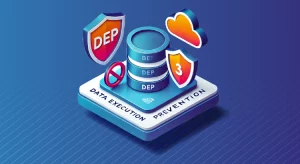
ODBC and JDBC: Technology Overview

ODBC is short for Open Database Connectivity. It is an API that allows applications to access data from different database management systems using SQL. Developed by Microsoft, ODBC provides a standard way for Windows applications to communicate with databases, regardless of the specific DBMS being used.
ODBC helps developers write applications that can work with different databases without needing to know all the details of each one. Its drivers help applications connect to various databases like MySQL, PostgreSQL, Microsoft SQL Server, and Oracle.
ODBC Architecture and Components
The ODBC architecture consists of four main components:
- Application: The software program that needs to access the database.
- ODBC Driver Manager: A library that manages communication between the application and the appropriate ODBC driver.
- ODBC Driver: A library specific to a particular DBMS that translates ODBC function calls into the native API calls of the DBMS.
- Database: The actual database management system that stores the data.
When an application makes an ODBC function call to access data, the ODBC Driver Manager loads the appropriate ODBC driver and passes the request to it. The driver then translates the request into the native API calls of the DBMS and sends it to the database. The database processes the request and sends the results back through the driver, which then returns the data to the application.
ODBC Configuration and DSN
To use ODBC, you need to configure a Data Source Name (DSN) that contains the information required to connect to a specific database. There are three types of DSNs:
- System DSN: Available to all users on the system and stored in the Windows registry.
- User DSN: Available only to the user who created it and stored in the Windows registry.
- File DSN: Stored in a file with a .dsn extension and can be shared among different systems.
The DSN contains information such as the ODBC driver to use, the database server’s hostname or IP address, the database name, and the authentication credentials.
What is JDBC?
JDBC, or Java Database Connectivity, is an API designed for Java applications to interact with databases using SQL. Developed by Sun Microsystems (now owned by Oracle), JDBC provides a standard way for Java applications to connect to various databases.
JDBC is like ODBC for Java developers. It lets them write applications that can work with various databases without needing to know the details of each one. JDBC drivers act as a bridge between the Java application and the database, translating the calls into the native protocol of the DBMS.
JDBC Architecture and Components
The JDBC architecture consists of two main layers:
- API: A set of interfaces and classes that define how Java applications interact with databases.
- Driver: A driver specific to a particular DBMS that implements the interfaces and handles communication between the application and the database.
Four types of JDBC drivers exist:
- Type 1: ODBC Bridge Driver
- Type 2: Native-API/Partly Java Driver
- Type 3: Network Protocol Driver
- Type 4: Thin Driver or Pure Java Driver
When a Java application makes a JDBC call to access data, the appropriate driver is loaded, and the request is sent to the database. The driver translates the call into the native protocol of the DBMS, and the database processes the request. The results are then sent back through the driver to the application.
JDBC Connection URL Format
To connect to a database using JDBC, you need to provide a URL. This URL specifies the database that the program should connect to. The general format of the URL is:
jdbc:[subprotocol]://[host][:port]/[database][?property1=value1&property2=value2...]
– `subprotocol`: The name of the JDBC driver or the database protocol, e.g., mysql, postgresql, sqlserver.
– `host`: The hostname or IP address of the database server.
– `port`: The port number on which the database server is listening (optional).
– `database`: The name of the database you want to connect to.
– `properties`: Additional connection properties (optional).
For example, a JDBC URL for connecting to a MySQL database might look like this:
jdbc:mysql://localhost:3306/mydatabase
ODBC vs JDBC: Key Differences
While both ODBC and JDBC serve the purpose of enabling applications to connect to databases, there are some key differences between the two:
- Language: ODBC is primarily used by applications written in C, C++, or other languages that support the ODBC API, while JDBC is specifically designed for Java applications.
- Platform: ODBC is mainly used on Windows platforms, although there are ODBC drivers available for other operating systems. JDBC, being part of the Java ecosystem, is platform-independent.
- Performance: In some cases, JDBC can offer better performance compared to ODBC, especially when using Type 4 (Pure Java) drivers, as they eliminate the need for additional layers of communication.
- Functionality: JDBC provides some additional features and data types that are specific to Java, such as support for Java objects and the `ResultSet` interface for handling query results.
Connecting to a Database using JDBC
Here’s a simple example of how to connect to a MySQL database using JDBC in Java:
import java.sql.*;
public class JDBCExample {
public static void main(String[] args) {
String url = "jdbc:mysql://localhost:3306/mydatabase";
String username = "myuser";
String password = "mypassword";
try (Connection connection = DriverManager.getConnection(url, username, password)) {
System.out.println("Connected to the database successfully!");
} catch (SQLException e) {
System.out.println("Error connecting to the database: " + e.getMessage());
}
}
}
In this example, we use the `DriverManager` class to establish a connection to a MySQL database using a JDBC URL, username, and password. The `try-with-resources` statement ensures that the connection is properly closed when it’s no longer needed.
Conclusion
ODBC and JDBC are essential tools for enabling applications to connect to databases using SQL. ODBC is for Windows apps, JDBC is for Java apps. JDBC is for Java apps and works on any platform with extra features.
Developers can create flexible and efficient applications by understanding the architecture, components, and configuration of APIs that work with various databases. Understanding ODBC and JDBC is crucial for developing robust and scalable applications. These applications are needed to keep up with the increasing need for data solutions.
